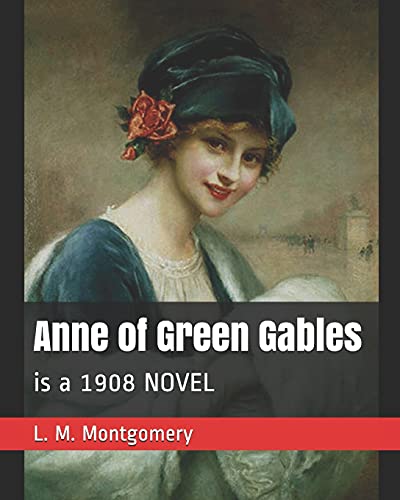Discovering Anne of Green Gables: A Timeless Journey to Avonlea
Explore why Anne of Green Gables remains a beloved classic, from its imaginative heroine to its lush Prince Edward Island setting and enduring themes.

Introduction: Why Anne Shirley Still Captivates Readers
More than a century after its first publication in 1908, "Anne of Green Gables" by Canadian author L. M. Montgomery continues to enchant readers of all ages. The red-haired orphan with a wild imagination and a heart full of hope has become an enduring symbol of optimism, resilience, and the transformative power of belonging. From its scenic Prince Edward Island setting to its universal coming-of-age themes, the novel offers both escapism and insight, making it a staple in classrooms, book clubs, and family libraries worldwide.
The Birth of a Literary Icon
Montgomery based her heroine on the real-life experiences of orphans in late-19th-century Canada, combined with her own childhood memories of rural life. When elderly siblings Marilla and Matthew Cuthbert request a boy to help with farm chores, they are unexpectedly sent an 11-year-old girl. Anne Shirley’s arrival at Green Gables upends their orderly existence, but her unbridled enthusiasm soon melts even pragmatic Marilla’s practical exterior. This premise, simple yet profound, sets the stage for a narrative about found family, identity, and the joys of discovering one’s place in the world.
Anne’s Unforgettable Voice
One of the novel’s most striking elements is Anne’s diction. Her ornate, often dramatic speech patterns both amuse and endear her to readers. She renames the local pond the “Lake of Shining Waters” and calls a favorite wood “The Haunted Forest,” illustrating the power of language to reshape reality. Modern readers, inundated with minimalist dialogue, find Anne’s loquaciousness refreshingly vibrant. It showcases Montgomery’s belief that imagination is not childish frivolity but a vital source of strength.
Exploring Major Themes
Imagination and Creativity
At its core, "Anne of Green Gables" is a tribute to imaginative resilience. Anne survives years of hardship in orphanages and foster homes by dreaming big. Her creativity not only offers escape, it actively transforms her environment, inspiring those around her to see beauty in everyday moments. The novel reminds us that imagination is a practical tool for coping with adversity, not merely an idle pastime.
Belonging and Identity
Anne’s journey is one of self-acceptance. Initially ridiculed for her freckles and fiery hair, she learns to celebrate her uniqueness. The Cuthberts’ gradual embrace of Anne echoes a broader message: families are forged through love, not solely through blood. Readers who have ever felt out of place find comfort in Anne’s triumph, underscoring the timeless hunger for community.
Education and Ambition
Montgomery champions education through Anne’s fierce academic ambitions. Her friendly rivalry with classmate Gilbert Blythe motivates her to top her class and pursue a teaching certificate. For early-20th-century girls especially, Anne’s determination signaled that intellectual aspirations were not only permissible, but admirable. The novel thus doubles as an early feminist text, encouraging readers to challenge societal limits.
Prince Edward Island: More Than a Backdrop
The pastoral landscapes of Cavendish—Montgomery’s real-life hometown—serve as a lush canvas for Anne’s adventures. Verdant fields, crimson cliffs, and lilac-lined lanes provide sensory depth that makes the story almost tactile. Tourism to Prince Edward Island has boomed because readers yearn to walk in Anne’s imagined footsteps. Modern adaptations and heritage sites preserve this literary geography, proving that setting can be as influential as plot in shaping a novel’s legacy.
Adaptations and Cultural Impact
"Anne of Green Gables" has inspired numerous adaptations, from the 1934 black-and-white film to the beloved 1985 miniseries starring Megan Follows, and Netflix’s recent "Anne with an E". Each version introduces Anne to new generations, emphasizing different angles—romance, social justice, or psychological depth. Beyond screen adaptations, the book has been translated into more than 36 languages, referenced in pop culture, and celebrated in academic circles for its progressive portrayal of girlhood.
Merchandising and Tourism
Avonlea-themed souvenirs, reenactment festivals, and guided tours contribute millions of dollars annually to Prince Edward Island’s economy. While commercialization can sometimes oversimplify Montgomery’s nuanced narrative, it also keeps Anne’s spirit alive, ensuring that new readers discover the source material.
Reading "Anne of Green Gables" Today
In an age of digital distraction, Anne’s unfiltered wonder feels almost radical. Her focus on nature, community, and personal integrity counters today’s pressures toward cynicism and instant gratification. Modern educators use the novel to spark discussions about empathy, environmental stewardship, and gender equity, proving its relevance well into the 21st century.
Tips for First-Time Readers
1. Savor the language: Montgomery’s descriptive passages reward slow reading.
2. Notice the growth arcs: Track how Anne, Marilla, and Gilbert evolve.
3. Explore the sequels: Anne’s story continues through eight novels, each tackling new life stages.
4. Pair with a visit: Even virtual tours of Prince Edward Island enrich the experience.
Conclusion: The Enduring Magic of Anne Shirley
"Anne of Green Gables" endures because it speaks to the universal desire to be seen, valued, and loved. Its vivid settings, memorable characters, and uplifting messages combine to create a literary haven that readers return to again and again. Whether you first encountered Anne as a child or are meeting her now, her story invites you to re-imagine the ordinary, cherish community, and hold fast to hope.



